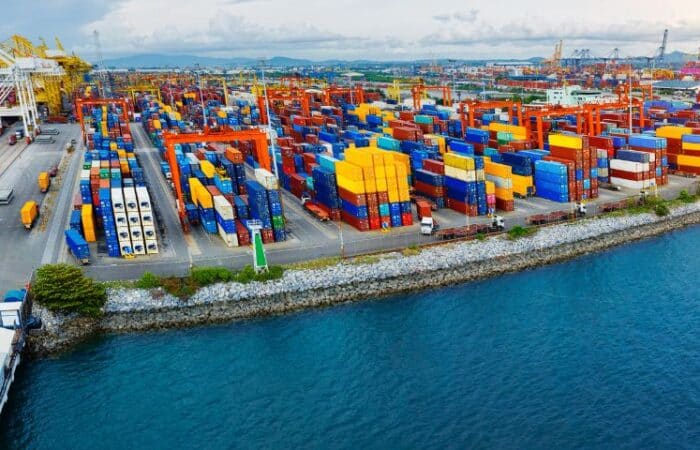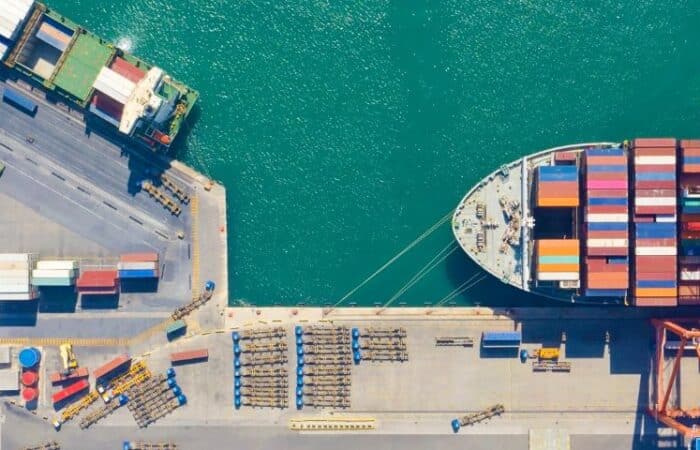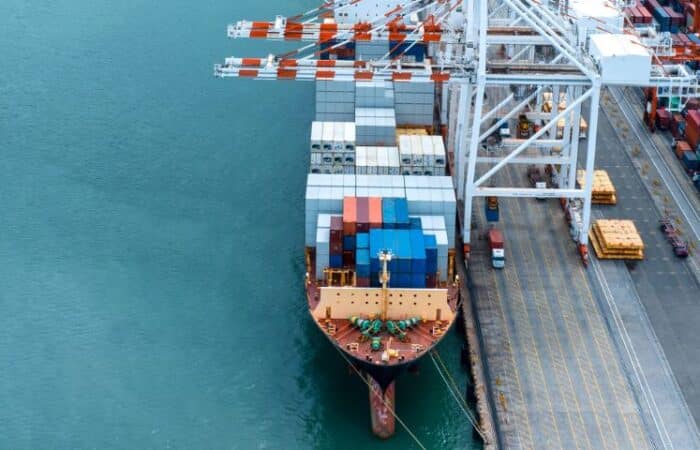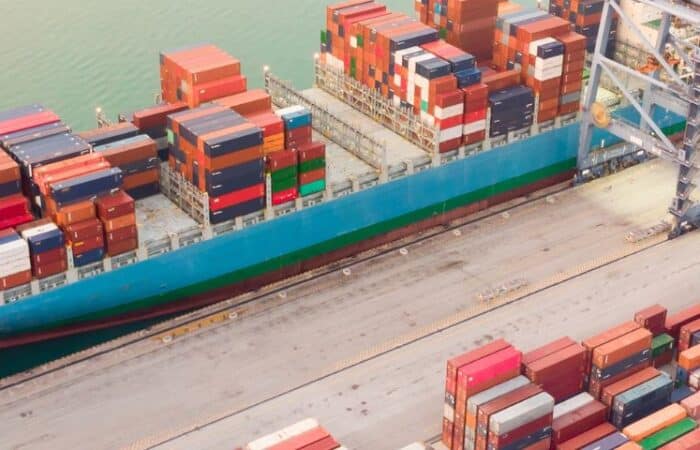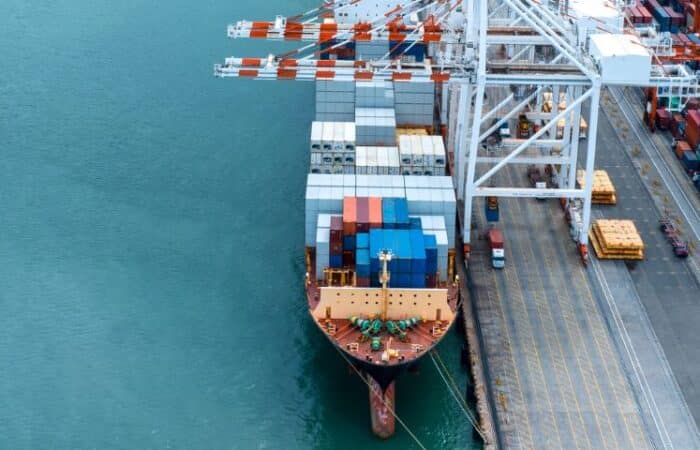Container Tracking
What is Container Tracking?
“Container tracking” has many meanings and applications across the logistics/supply chain industry, often depending on which person or organization you are speaking with. Container tracking uses technology to monitor the location and status of shipping containers throughout their journey from the port of loading to the port of discharge. It can refer to rudimentary, manual efforts to track containers, and go all the way up to a comprehensive, AI-powered solution for shippers and freight forwarders to track and monitor their shipments as they move through the supply chain. Sophisticated container tracking technology has various benefits, including reduced late fees and penalties – most notably detention and demurrage charges – offering clarity on delays, and opening up more time to serve customers. Automating mundane tasks and optimizing planning will also lead to cost savings.
How Container Tracking Works
Advanced container tracking using Maritime AI™ technology leverages artificial intelligence (AI) and machine learning algorithms that collect and analyze vast amounts of data from various sources. These include satellite imagery, weather patterns, and port data, to provide real-time visibility into container movements. This generates the most accurate ETA predictions for the entire global fleet of container vessels.
Advantages of Automated Ocean Container Tracking
With millions of containers transporting billions of dollars worth of cargo around the world, tracking containers is a necessity. There are many advantages of automating ocean freight tracking, which will streamline the entire shipping process.
- Real-time visibility: track the exact locations of your containers and easily monitor the status of your shipments. This capability is even more vital when dealing with transshipments, as the container is unloaded at multiple ports and reloaded onto different vessels.
- Improved supply chain efficiency: container tracking systems offer actionable insights into inventory location, advanced knowledge of delays or early arrivals, and enable inventory management to make informed decisions. By identifying supply chain issues like port bottlenecks and inefficiencies, container tracking allows businesses to improve operational efficiency and reduce costs, resulting in smoother operations.
- Exception management saves you time: eliminate manual tasks, such as phone calls and waiting on hold, while a logistics manager looks for your container’s location. Container tracking that utilizes a Maritime AI™ solution can automate notifications using exception management, so that you can concentrate on the containers that are going to arrive critically late or early.
- Reduce shipping costs and avoid fees: optimize your routes, avoid congested ports, and improve the accuracy of your ETA with a container tracking system that uses Maritime AI™ technology. Having a real-time and accurate ETA can assist in reducing avoidable detention and demurrage charges.
Tracking Containers in the Mediterranean Region
“Mediterranean container tracking” refers to the process of tracking and monitoring shipping containers that are being transported to or from ports located in the Mediterranean region. This area includes countries such as Spain, Italy, Greece, Turkey, and Egypt, among others.
Tracking containers in the Mediterranean region can be particularly important, due to the high volume of international trade that passes through the area and the complex network of ports and shipping routes involved.
Navigating Transshipment Challenges
Transshipment scenarios can often be complicated, with frequent delays. Freight forwarders, beneficial cargo owners (BCOs), importers, and exporters are forced to act as investigators to locate their shipments and figure out exactly where their containers are, and where they are going.
In a classic container journey, the container will leave the POL on vessel A, stop at a transshipment hub, and be transferred to vessel B. Sometimes, there may be multiple stops at transshipment ports on the way to the final POD. During this journey, there are multiple times when potential delays may occur, and accurate, real-time container tracking is essential. Whether it be due to a rollover – when the container failed to be loaded onto the vessel that was scheduled to transport it, or a short transshipment buffer – when the transshipment window is too small, and it is at high risk of not being completed as scheduled – knowing the reasons for delay in advance is a game-changer. Real-time container tracking helps organizations take immediate action and avoid future.
Real-Time Reasons for Delay
According to a survey, “A significant number of consumers (70%) experienced shipping delays without any reason provided for the delay (35%)…One area of opportunity for businesses is enhancing shipping visibility and accountability to help avoid unexpected delays. And when delays invariably occur, have a plan in place for customer communication to update expectations and provide potential appeasement to create customer loyalty.”
As stated above, knowing the reasons for delay is critical. When the vessel leaves the POL later than scheduled, it has a domino effect on the rest of the container journey. If there is a late departure, this can affect the transshipment buffer, leading to the transshipment window being too small or a transshipment delay, where it will occur later than scheduled. Other reasons for delay include when no vessel has been allocated to load the container(s) at the POL or transshipment port, and an unfeasible journey, meaning the expected transit time provided by the carrier is too short, based on Windward’s data and estimations.
Tracking Container Milestones with AI
Freight forwarders and shippers often struggle to gain full visibility of their shipments. The actual time of arrival (ATA) and actual time of departure (ATD) are the most critical and least reported milestones. Carrier updates can be delayed by several days, causing unnecessary demurrage fees as a result.
Containers pass through multiple milestones during a standard container journey. For example, both the importer and exporter need to know when a container has been loaded at the port of loading (POL) and if there is a freight on board (FOB) agreement. This is the point when the official cargo handover takes place, and the shipper receives payment.
Receive much-needed value from an AI-powered container tracking system that provides full visibility of milestones:
- Knowing when the shipper can hand over the responsibility of the shipment to the importer and when the cargo is loaded on board. This is the point where the shipper gets paid and obviously wants to receive the money ASAP.
- Better management of land transportation and warehouse staffing by knowing when the container was loaded onto a vessel at the transshipment port, and when it was discharged at the POD, freeing up personnel for more critical tasks and knowing when/how to scale.
- Keeping track of critical dates, such as ATA and ATD, to validate late fee invoices – instead of wasting money on inaccurate detention and demurrage charges.
- Minimize human error and get real-time updates, so that shippers and freight forwarders don’t need to rely on other inaccurate sources.
Manual Container Tracking vs. Maritime AI™-Powered Container Tracking
Manual container tracking and Windward’s Maritime AI™-powered container tracking represent two vastly different approaches to monitoring and managing shipping containers within the supply chain and logistics industry. Let’s compare the two.
| Feature | Maritime AI™-Powered Container Tracking | Manual Container Tracking |
| Data Accuracy | High accuracy due to automated data collection and analysis. | Prone to human error, which can lead to inaccuracies. |
| Data Timeliness | Real-time tracking updates provide immediate data access. | Delays common as data is updated manually. |
| Scalability | Easily scales with business growth due to automated processes. | Scaling up requires significantly more resources and labor. |
| Operational Efficiency | Enhances operational efficiency with automated workflows and data integration. | Manual processes are time-consuming and less efficient. |
| Cost Effectiveness | Reduces labor costs and error-related losses, becoming more cost-effective over time. | Higher long-term costs due to labor intensity. |
| Risk Management | Improved risk management with predictive analytics and proactive monitoring. | Reactive risk management, dependent on manual oversight. |
| Customization and Flexibility | High customization potential to meet specific operational needs. | Limited by manual processes and slower adaptation rates. |
| Integration with Other Systems | Seamless integration with existing IT ecosystems and other digital tools. | Often requires manual input and data manipulation. |
Container Tracking and API Integration
API integration has revolutionized the landscape of container tracking. Windward’s Ocean Freight Visibility solution offers robust API integration, allowing you to seamlessly incorporate tracking data into your existing systems. What’s the practical significance? It results in a continuous stream of up-to-the-minute data, greatly boosting your operational efficiency.
With API integration, there’s no need to manually check multiple platforms to stay informed. You can streamline your container tracking processes and save precious time and resources for other critical business activities.
You can monitor the progress of your ocean container shipments comprehensively, spanning from their departure to arrival, all without the hassle of toggling between various platforms.
Expect real-time updates, not just on the current location of your containers, but also on their expected time of arrival and potential risk of delays. This comprehensive information remains at your disposal throughout the entire journey of the containers.
Avoid Detention and Demurrage Fees with Maritime AI™-Powered Container Tracking
Maritime AI™-powered container tracking can help avoid costly detention and demurrage charges. Accrued fees occur when containers exceed the free time at ports, often due to unforeseen delays or operational inefficiencies.
Cutting-edge container tracking tech harnesses real-time data from various sources like port schedules, weather updates, and traffic data. By analyzing this information, it forecasts bottlenecks and potential delays, empowering businesses to proactively reroute or reschedule shipments. This proactive stance reduces container idle time at ports, sidestepping the substantial fees linked to detention and demurrage charges.
Exception Management and Maritime AI™-Powered Container Tracking
In today’s maritime logistics landscape, efficient operations hinge upon advanced solutions like Maritime AI™-powered container tracking coupled with robust exception management systems.
Exception management refers to the process of identifying, analyzing, and resolving anomalies that occur during the shipping process. These exceptions can happen as a result of any event that changes the arrival time, such as:
- Rollover – the container failed to be loaded onto the vessel that was scheduled to transport it out of the transshipment port (TSP) or port of loading (POL)
- Transshipment delay – the transshipment will occur later than scheduled
- Late departure – the vessel left the POL later than scheduled
- Short transshipment buffer – transshipment has a high risk of not being completed as scheduled, due to the TS window being too small
- No vessel allocation – no vessel has been allocated to load your container(s) at the POL or TSP
- Unfeasible journey – the expected transit times provided by the carrier are too short, based on Windward data and estimation
This cutting-edge technology not only ensures real-time container monitoring but also enables proactive intervention to prevent delays and bottlenecks. Seamlessly integrating container tracking systems empowered by AI technology optimizes supply chain processes, allowing businesses to streamline operations and mitigate risks associated with container movement and logistics. Embracing these innovative approaches to container tracking fosters enhanced visibility and precision in managing maritime cargo, ultimately driving efficiency and reliability in global trade. This comprehensive approach encompasses identifying, analyzing, and resolving anomalies swiftly and effectively.















